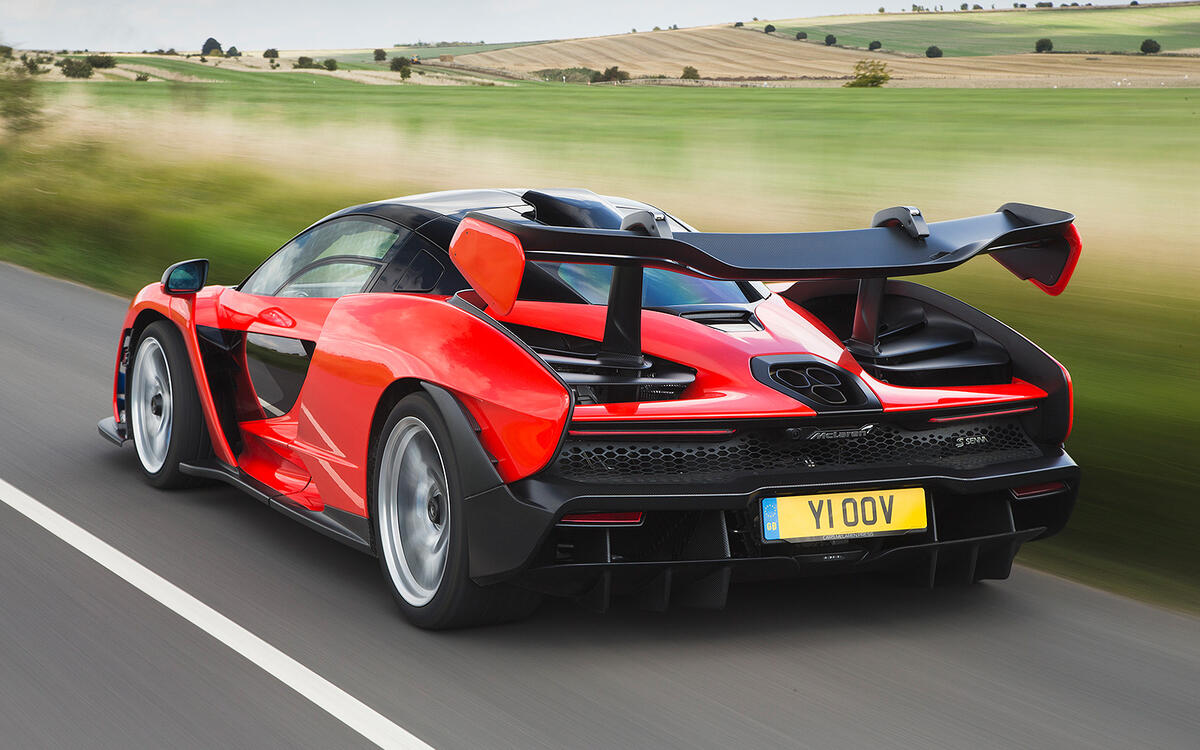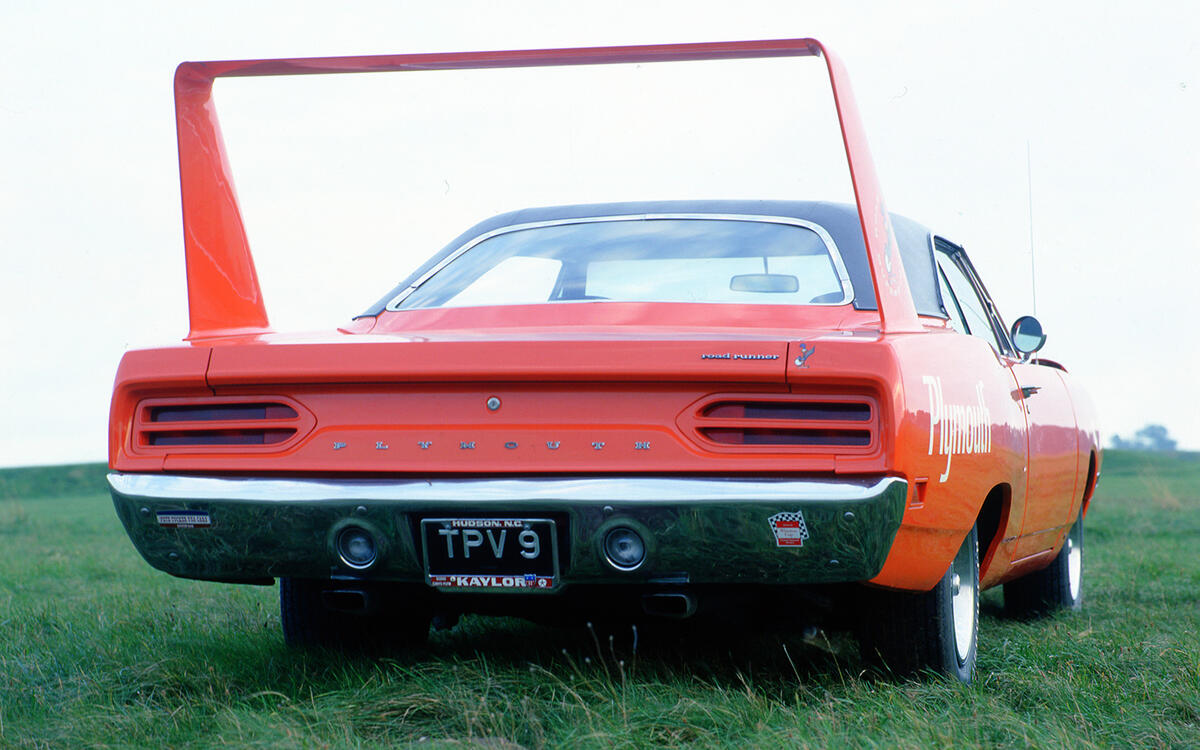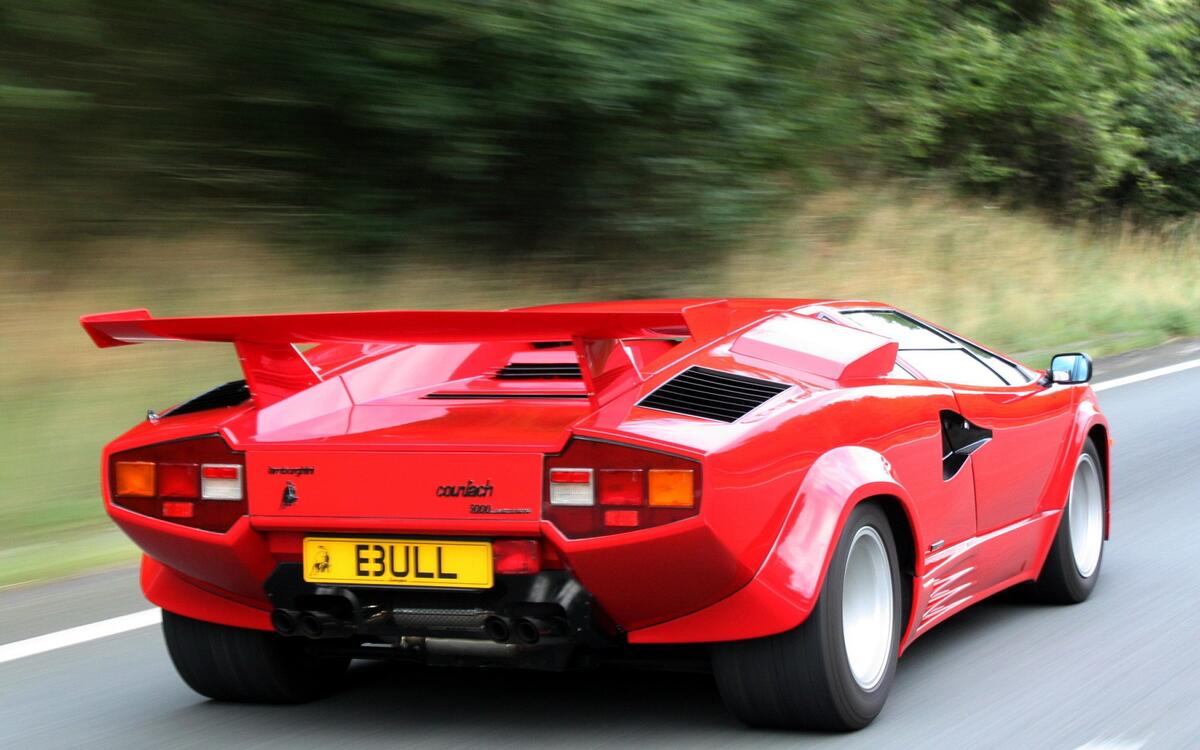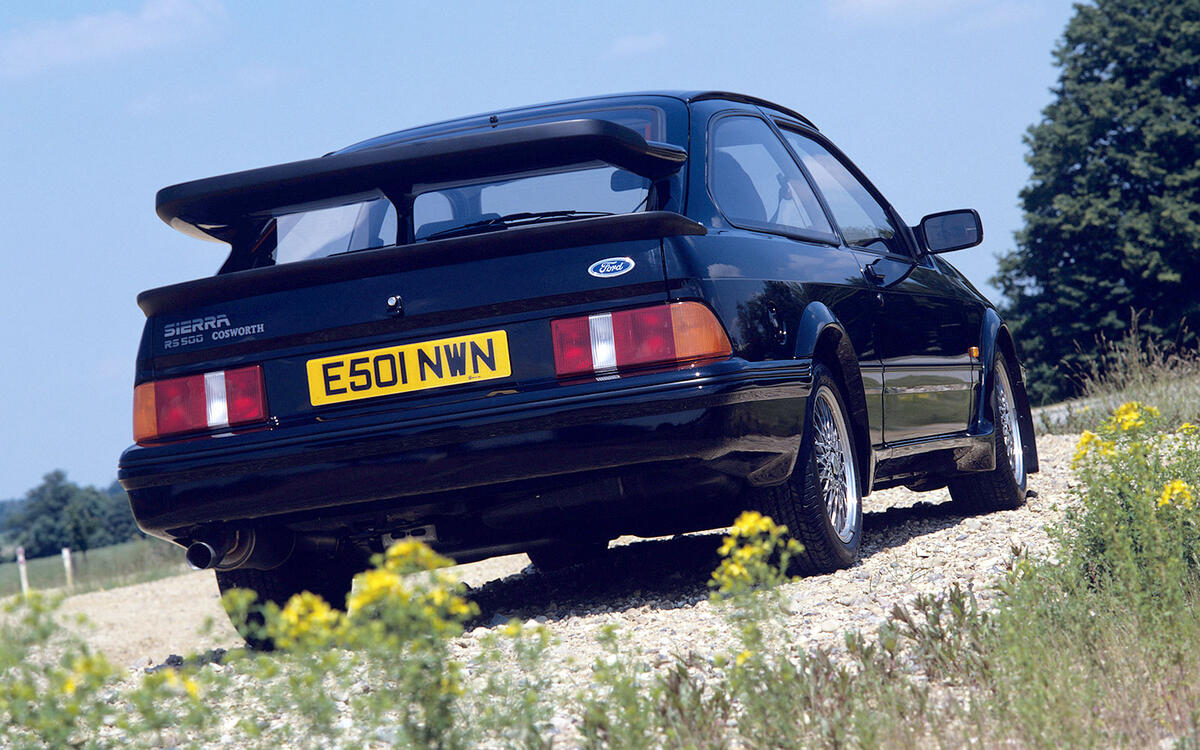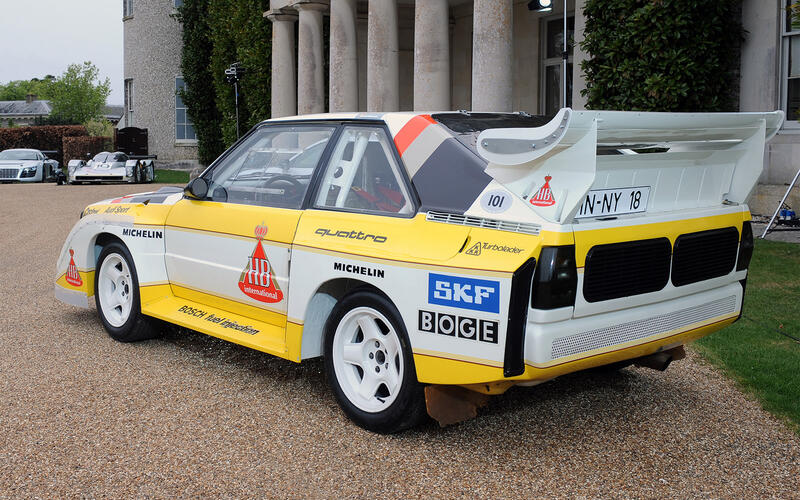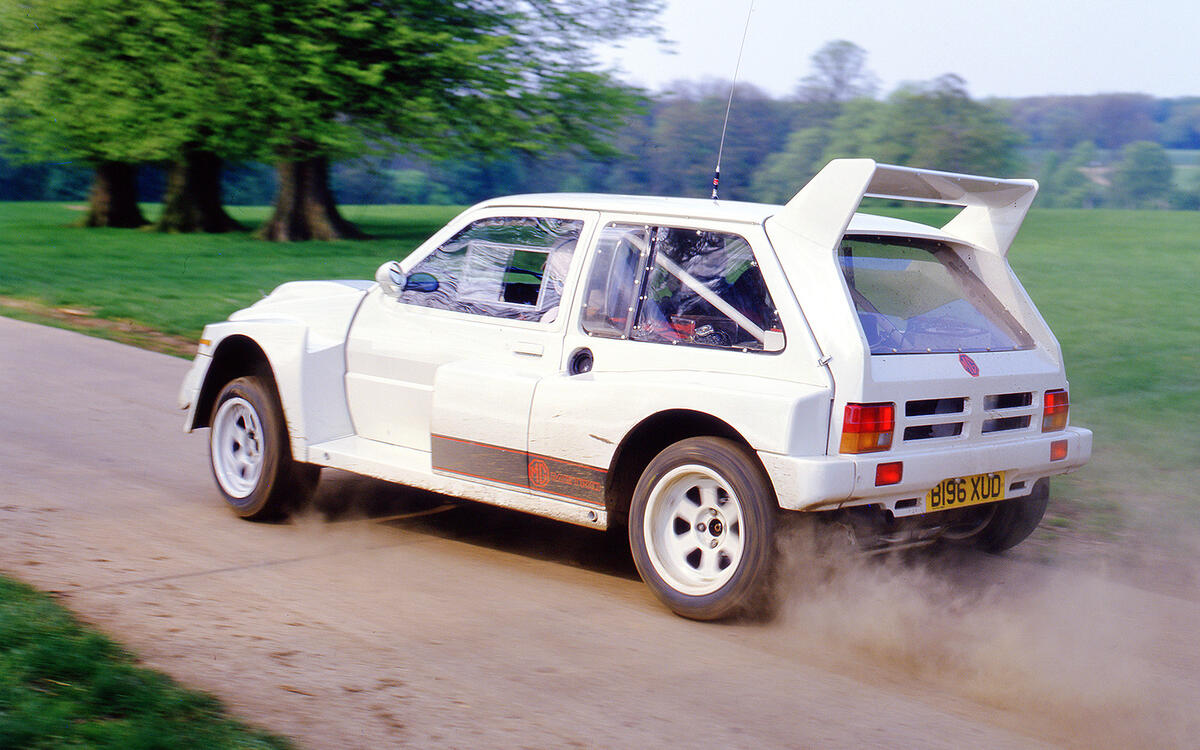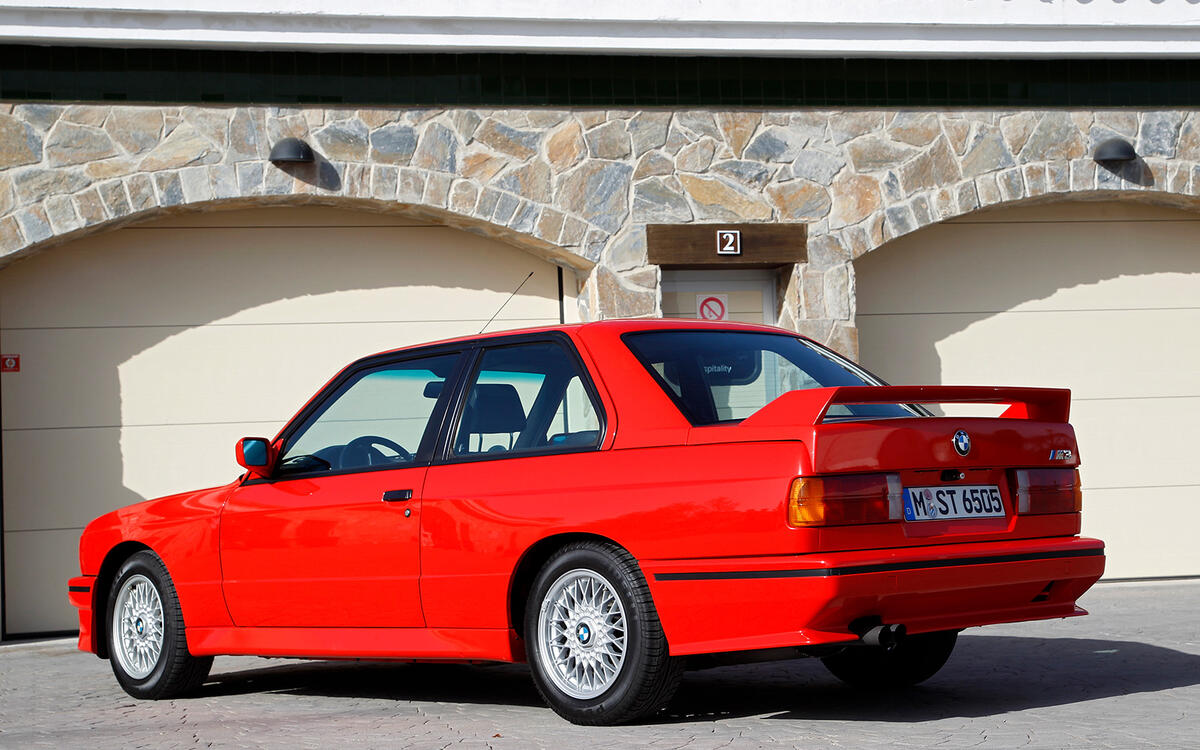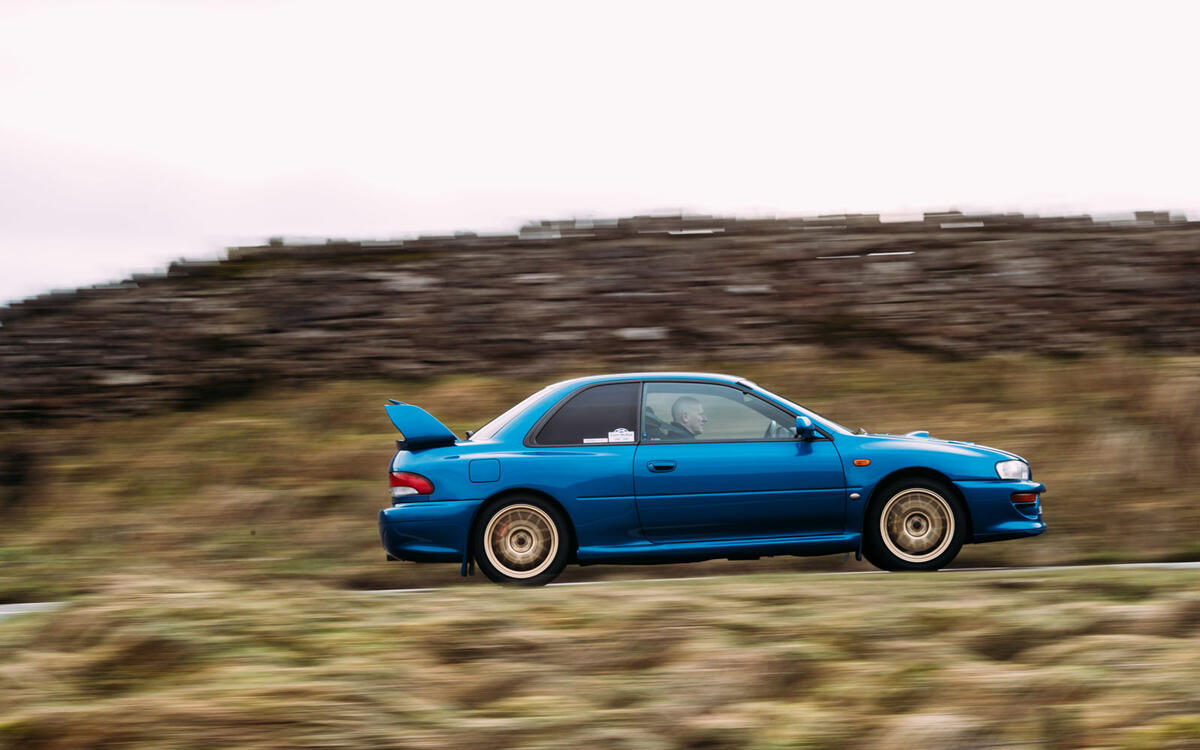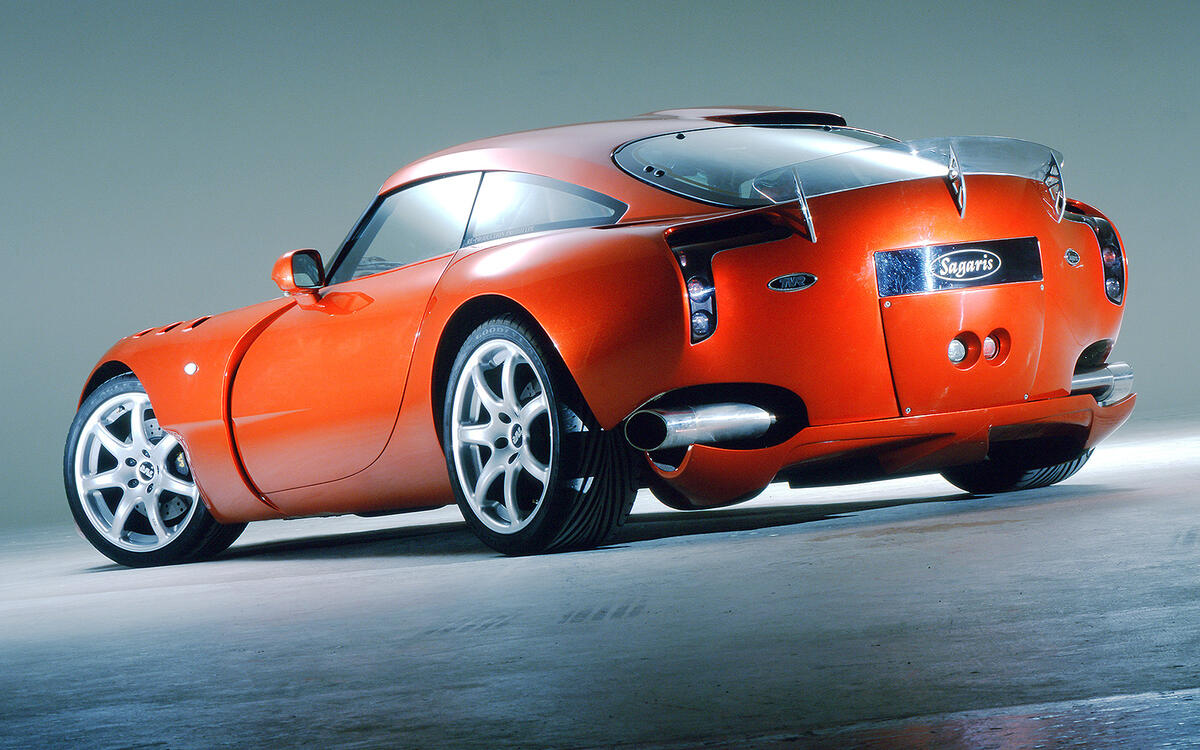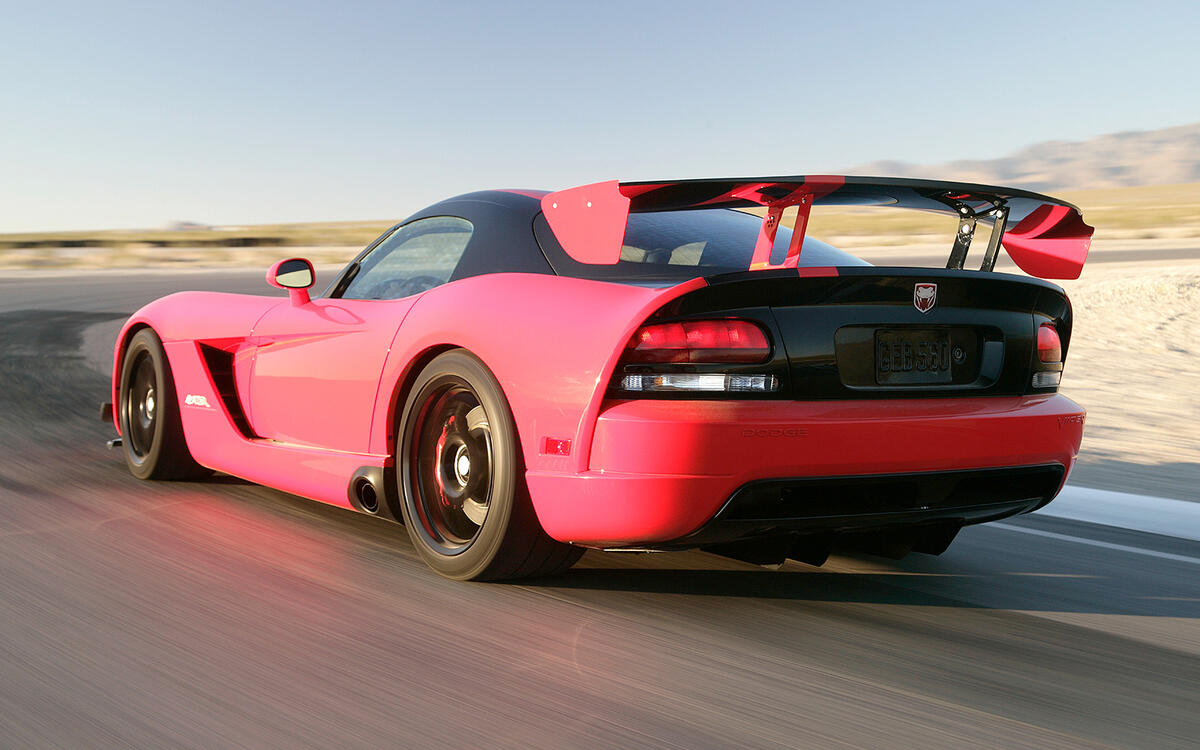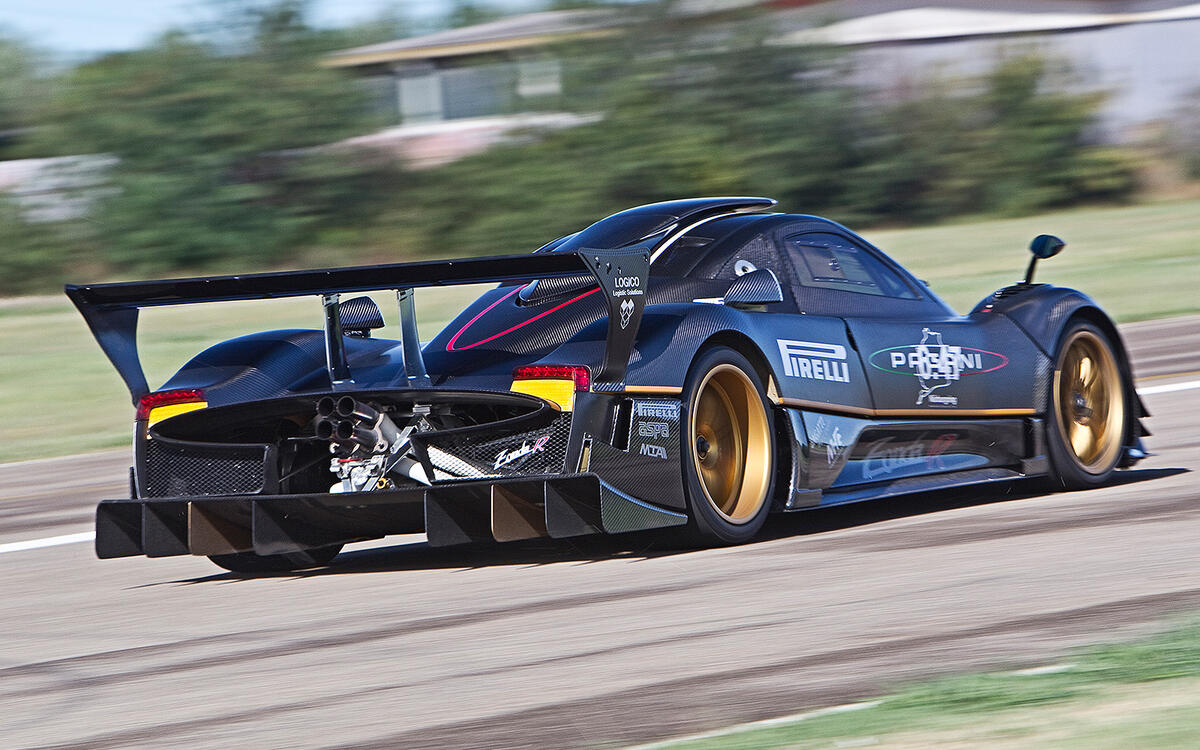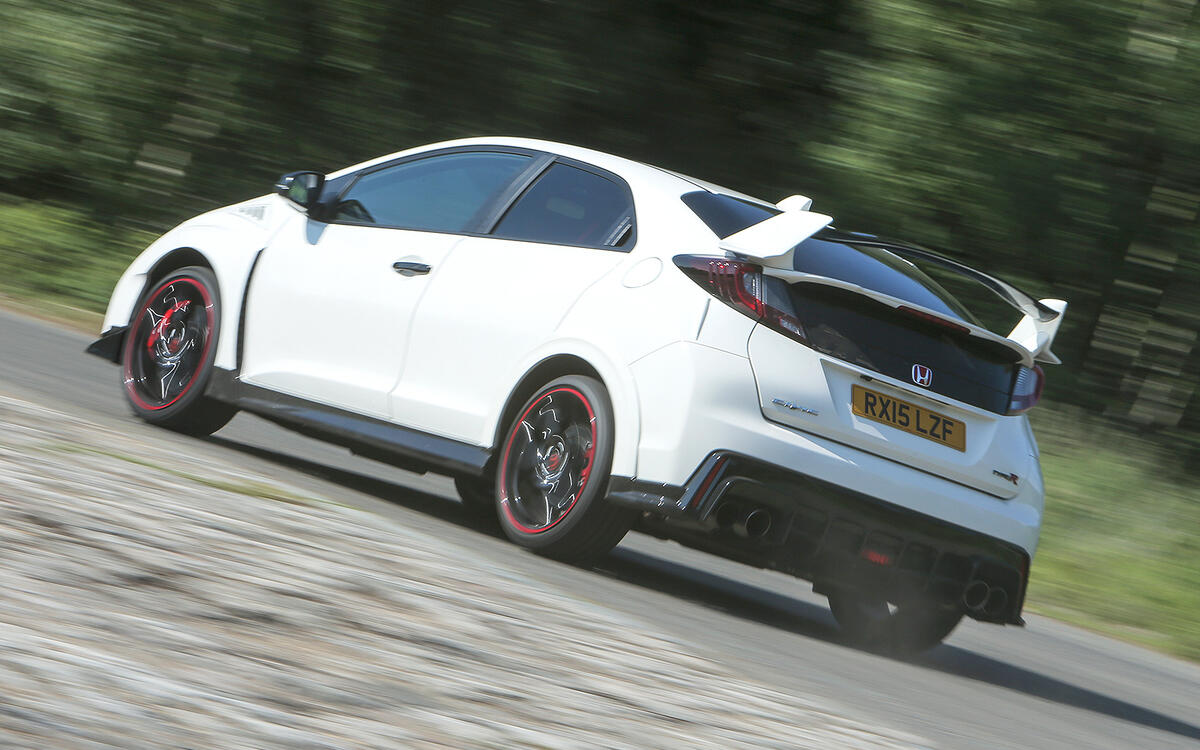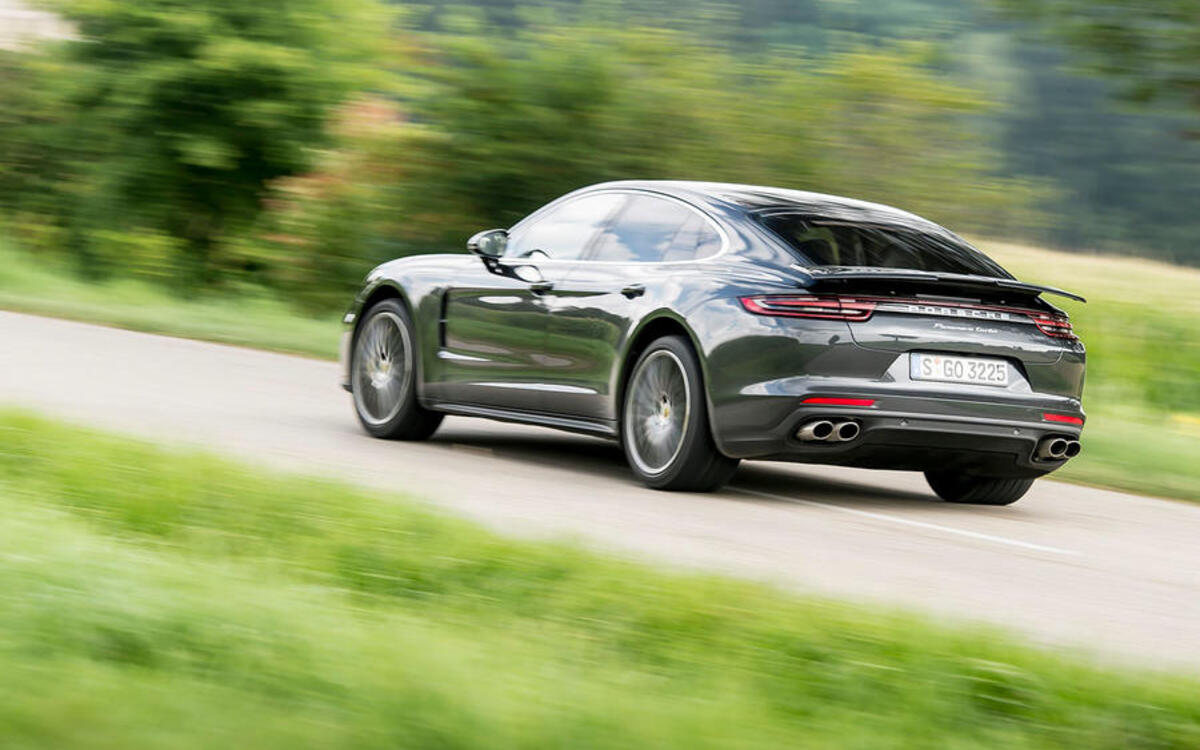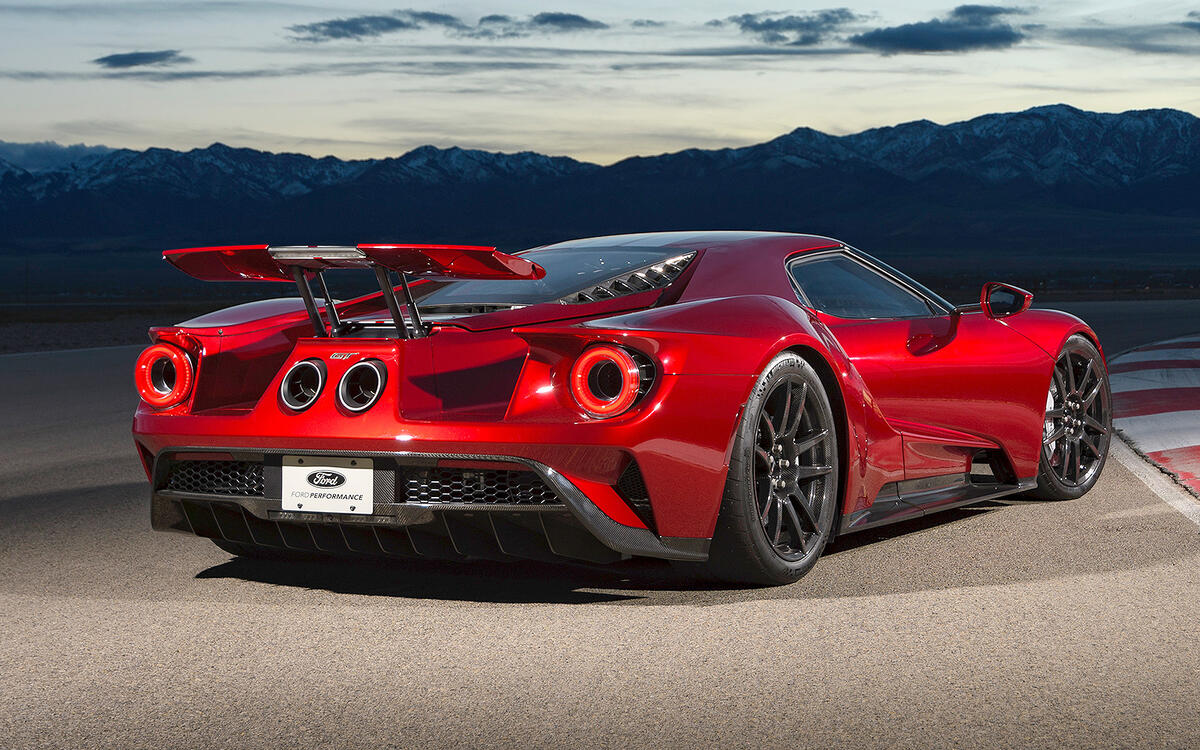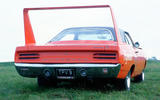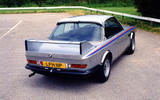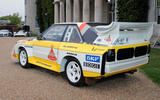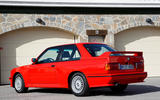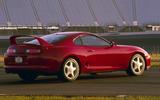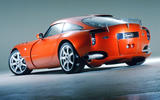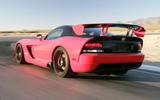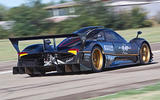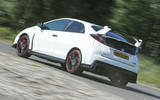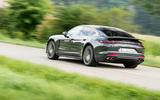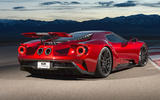 Slide of
Slide of
Wings, spoilers and air dams come in all shapes and sizes.
Here, we celebrate the biggest and best, most interesting and outrageous. Most feature to help the car’s performance, but some also appear purely for the sake of style. We’ve listed them in chronological order:
 Slide of
Slide of
Plymouth Roadrunner Superbird (1970)
With a name like Roadrunner Superbird, this Plymouth was never going to be a shopping trolley of a car. It came about as one of the ‘Aero Warrior’ cars developed by Dodge, Ford, Mercury and Plymouth in a bid for NASCAR racing supremacy in the late 1960s.
Plymouth’s was specifically designed as a homologation model and also to try to tempt racing legend Richard Petty (born 1937) back into the fold.
 Slide of
Slide of
BMW 3.0 CSL Batmobile (1973)
The Batmobile was the ultimate expression of BMW’s most exotic car of the early 1970s, yet not a single one left the factory with the wing that gave the car its nickname. The reason was that the famous and large rear spoiler was illegal in Germany, so BMW stored it in the boot for owners to fit themselves.
Only 39 of the true 3.2-litre Batmobiles were ever made and they were homologation cars to keep BMW in the fight in the European Touring Car Championship. As well as the rear spoiler, they had fins along the top of the front wings and another spoiler above the rear window for high speed directional stability when racing.
 Slide of
Slide of
Porsche 911 (1974)
The 911 Turbo, or 930 to give it the correct number, made the whale tail famous for Porsche. However, this immediately recognisable spoiler made its first appearance a year before the Turbo’s launch on the 1974 Carrera RS 3.0. The RS was an exotic, expensive race-ready model that employed the whale tail for purely functional aerodynamic and cooling reasons.
When the spoiler made its appearance on the Turbo, it instantly marked out this model as something special. By the mid-1980s, it was a common sight on lesser 911 models but was changed in shape for the 1978 3.3-litre Turbo to accommodate an intercooler that helped boost power to 300bhp from the original’s 260bhp.
 Slide of
Slide of
Ford Escort RS2000 (1976)
Never has a stubby piece of rubber fixed to a boot lid held so many in rapture as the spoiler on the Mk2 Ford Escort RS2000. The same spoiler had already been used on the earlier 1600 Sport and RS Mexico models, but the RS2000 was the one that tickled many a sporting driver’s fancy.
Along with the ‘droop snoot’ front end, the RS2000 was instantly recognisable from any other Escort and its rear spoiler was there for good reason. Years of experience in rallying had taught Ford this small addition would help prevent aerodynamic lift, even if it didn’t give any downforce. Just as importantly, it was a must-have for the sporting Escort and Ford shifted more than 10,000 of them.
 Slide of
Slide of
Lamborghini Countach (1978)
Many consider the earlier Countach LP400 to be the purer, better looking car, but that didn’t stop most buyers from 1978 onwards choosing the V-shaped rear wing. This arrived with the LP400S and could be bolted or unbolted quickly depending on the owner’s mood.
With the rear wing attached, it improved high speed stability but at the expense of top speed. With the wing in place, the LP400S was 10mph slower than the earlier version with a flat-out speed of 180mph. Lamborghini solved this with the more powerful LP500S and eventually with the LP5000QV that could hit 182mph.
 Slide of
Slide of
Ford Sierra RS Cosworth (1985)
If ever a single spoiler summed up a decade, it was the Ford Sierra RS Cosworth’s massive addition. It was the work of Lothar Pinske, who worked out the spoiler needed to be mounted high and prominently to overcome the aero lift caused by the three-door Sierra’s hatch design. The style initially met with resistance from Ford’s management, but Pinske insisted it was necessary to cope with the RS’s 150mph top speed.
He was proved absolutely right and the RS Cosworth quickly became all but unbeatable on the road and track. When the RS500 homologation model was launched, it had an even more aggressive spoiler thanks to a small lip on the upper deck and a lower spoiler fixed to the tailgate’s trailing edge.
 Slide of
Slide of
Audi Quattro Sport S1 E2 (1985)
Even the mighty Audi Quattro had to develop and evolve to remain at the front of world rallying. This resulted in the S1 model in 1984 with more power and Kevlar bodywork to shed weight, but it was the E2 version that really caught the eye. Its enormous front and rear spoilers were cartoonishly large to produce sufficient downforce to keep Audi in the hunt with its main rivals.
Like all other Group B rally teams, Audi’s time came to an end in 1986, but the S1 had a final moment in the spotlight when Walter Röhrl (born 1947) took it to victory in the 1987 Pikes Peak hillclimb. With 750bhp and an early version of a PDK dual-clutch gearbox, this Quattro needed all the aerodynamic help it could get to set a winning time of 10mins 47.85secs.
 Slide of
Slide of
MG Metro 6R4 (1985)
The MG Metro 6R4 started out with almost mild bodywork as it initially tried to retain some of the looks of the humble Metro supermini it was very loosely based on. However, by the time the 6R4 started its first rally, it had gained huge front and rear spoilers to give maximum downforce to cope with a car capable of 0-60mph in 3.2 seconds.
The spoilers were made from glassfibre, which was cheap to produce and replace - ideal as rally cars almost always suffer damage at some point. Only the doors of the original Metro remained, while the wings made the 6R4 one of the most easily identifiable cars of the Group B rally era.
 Slide of
Slide of
Ferrari F40 (1987)
Like so many of Ferrari’s greatest cars, the F40 was styled by Pininfarina. Leonardo Fioravanti (born 1938) was in charge of the F40’s appearance and the large integrated spoiler was always going to be part of this car’s looks and appeal. He wanted something that was not only going to be useful for racing but gave owners the feel of motorsport even when the car was parked in the garage.
Made from Kevlar, like the rest of the F40’s outer panels, the spoiler is an integral part of the whole rear canopy that lifts up to reveal the engine. On cars with original paintwork, it’s possible to see the weave of the carbonfibre beneath as the colour coats were kept to a minimum to save weight.
 Slide of
Slide of
BMW M3 E30 Sport Evolution (1989)
The Sport Evolution was the ultimate expression of the original BMW M3 E30 model. Part of this limited edition run of 600 cars’ package was a unique rear spoiler that could be adjusted to give more or less downforce. The reason for this wing was to homologate it for motorsport to keep the M3 competitive against the might of the Ford Sierra RS500s on track.
Altering the wing’s angle was quite simple, but most owners left well alone as the 238bhp Sport Evo was already a superb road car. If you did choose to play with the wing, there were three positions to set it at, from barely noticeable to downright aggressive. A bigger front splitter was also part of the Sport Evo package.
 Slide of
Slide of
Mercedes-Benz 190E 2.5-16 Evo II (1990)
Mercedes made some effort with the 190E 2.5-16 Evolution to give buyers an alternative to the BMW M3. However, it was down to the 1990 Evo II model to really go the whole hog and this was glaringly obvious with its rear spoiler set-up. Rather than the meek Evo I’s wing, the Evo II had a massive high-riding spoiler that was pure race car. It also came with a secondary spoiler fixed just above the rear window.
While all of this was a show of intent from Mercedes, it was also built on sound science and designed by Professor Richard Eppler from the University of Stuttgart. It proved its worth in the wind tunnel, where the Evo II reduced drag to 0.29Cd while also gaining more downforce. No wonder all 502 Evo II models were sold before the car was officially unveiled at 1990’s Geneva Motor Show.
 Slide of
Slide of
Lancia Delta HF Integrale Evo (1991)
The Delta Integrale was a great success for Lancia, giving it a strong presence in the sports car market and world rallying. The Evo took this a step further with more power and more aggressive bodywork to qualify the changes to meet rally regulations. As a result, the Evo sprouted a distinct rear spoiler above the tailgate.
To further help with homologation, the 15,000 Evo models built all came with an adjustable rear spoiler. It could be moved between three positions, from subtly lowered to jutting full prominence. Changing its angle was quick and easy thanks to a pair of brackets either side of the spoiler.
 Slide of
Slide of
Toyota Supra (1993)
Until the fourth generation A80 model, the Toyota Supra had been a rather anodyne looking coupé. The sleek looks of the A80 solved that and further stunned fans with the optional rear spoiler. No small lip or crease here, but a big, proud hoop that told the world the Supra could take on and beat the best in the business.
At 100kg lighter than its predecessor and with more power, especially in full-on 325bhp form, it could hit 177mph. The spoiler was there to keep the car stable at such speeds and it’s helped this generation of Supra to become a modern classic and the one most people think of when the name is mentioned.
 Slide of
Slide of
Subaru Impreza 22B (1998)
There was a lot to make the 22B stand out from the many quicker versions of the Subaru Impreza. Prime among those features was the unabashed rear spoiler that looked like it had been taken straight from a WRC car. Owners could manually adjust the angle of the wing’s rear edge for more or less downforce.
The wing wasn’t an exact replica of the WRC rally car’s, but that didn’t matter to the 400 eager buyers who snapped up the 22B production run of just 24 hours. Subaru made a further 16 for UK enthusiasts, five for Australia and three ‘000’ numbered cars for Colin McRae, Nicky Grist and Prodrive’s David Lapworth. Even so, the car’s exclusivity meant even these three had to pay to own one.
 Slide of
Slide of
TVR Sagaris (2003)
The Sagaris was a logical conclusion of everything TVR aimed for during the Peter Wheeler years. Raw, exciting and undiluted by driver aids, its only real concession to helping the driver was the transparent spoiler that poked up from the rear edge of the car.
Like everything on a TVR, it served a function and helped pin the rear wheels to the road, earning the Sagaris many plaudits as the best car the company ever produced. Just as well when it came with 400bhp and could hit 195mph.
 Slide of
Slide of
Dodge Viper ACR (2008)
This Dodge Viper gets its name from American Club Racing (ACR) as this was squarely where its purpose lay. The idea was anyone could buy an ACR and go racing. Dodge had used the formula on the previous SR II model, but it was 2008’s ZB II that came with the huge carbonfibre rear wing that made this a standout car in an already exceptional lineage of Vipers.
Even though the ACR was completely street legal, the wing was not for show and created 455kg of downforce at 150mph. This was 10 times more downforce than the standard road version managed at this speed, helped further by an adjustable front splitter.
 Slide of
Slide of
Pagani Zonda R (2009)
The Zonda R was as much a testbed for Pagani as a serious production model. The R name showed its aim was for use on race tracks by wealthy track day fans, though it also worked as a proving ground for many of the parts that would eventually end up in the Huayra. As a result, the R shared only 10% of its components with the standard Zonda.
One of the R’s unique parts was its adjustable rear wing that had more in common with world endurance racing than road cars. Poking up directly into the airflow, it helped the Zonda R set a new lap record of the Nürburgring at 6min 47sec when it first appeared in 2007. This helped 15 customers stump up the £1.5 million list price for the Zonda R.
 Slide of
Slide of
Honda Civic Type R (2015)
Usually reserved Honda suddenly stepped back into the hot hatch spotlight, after a three year absence, with the 2015 Civic Type R. Aside from the FK2’s model’s power and pace, it was the huge rear wing that set this car apart from its rivals. Purely for function, it gave the car genuine downforce, though admittedly it was only a small amount.
No matter, it set the Type R apart from even its most lairy rivals and gained the Civic a whole new following. This carried through to the 2017 FK8 model that had even more power and more downforce but with less aerodynamic drag from that large spoiler. This wing was developed using data from Honda World Touring Car racer and also uses vortex generators on the trailing edge of the roof to channel more air across the wing’s surface.
 Slide of
Slide of
McLaren Senna (2017)
We always expect a lot from an Ultimate Series McLaren and the Senna delivers it in spades. Not only does its prominent rear wing help deliver up to 800kg of downforce at high speed, it alters its angle to maintain stability as speeds vary under acceleration and braking.
Making this wing even more intelligent, it's fed air via a small gurney flap on the bodywork. This helps draw hot air from the engine by creating a low-pressure area and sending it over the spoiler’s surface for optimum downforce. Naturally, the wing itself is made from carbonfibre to be as light and strong as possible.
 Slide of
Slide of
Porsche Panamera Turbo (2017)
Porsche’s prowess in engineering solutions to eke out the best performance from its cars is evident in the Panamera Turbo’s rear wing. The second generation Panamera needed a bigger rear wing, so the fix came in a three-piece wing that pops up and out of the rear boot. At low speeds, it’s invisible to retain the lines of the car.
Two electric motors operate the Panamera’s rear spoiler, which is made from more than 300 individual components. At speeds up to 124mph, it works to reduce drag and improve fuel economy. Beyond that, the 147cm wide spoiler increases downforce by automatically angling to a steeper degree.
 Slide of
Slide of
Ford GT (2017)
Hidden from view at a standstill, the Ford GT’s rear wing emerges on two struts from 70mph when the car is in Sport mode. Stick to Normal or Wet settings and it doesn’t come into play until 90mph, though it will also act as an air brake from 75mph regardless of what driving mode the car is in if the driver uses the brakes aggressively.
The constant adjustments of the rear spoiler can be overruled in Track mode for it to be permanently raised, while Vmax sees it stored away to give the best aerodynamics. All of this is combined with active aero that opens and closes other vents in the car’s body work to ensure the best flow of air over the GT.
If you enjoyed this story, sign up to Autocar’s newsletter for all the best car news, reviews and opinion direct to your inbox. Click here to subscribe.
Spoilers may be seen as a way of making a car look sporty, but for powerful cars they're an aerodynamic must. We take a look at the wildest wings we’ve ever seen
Advertisement

